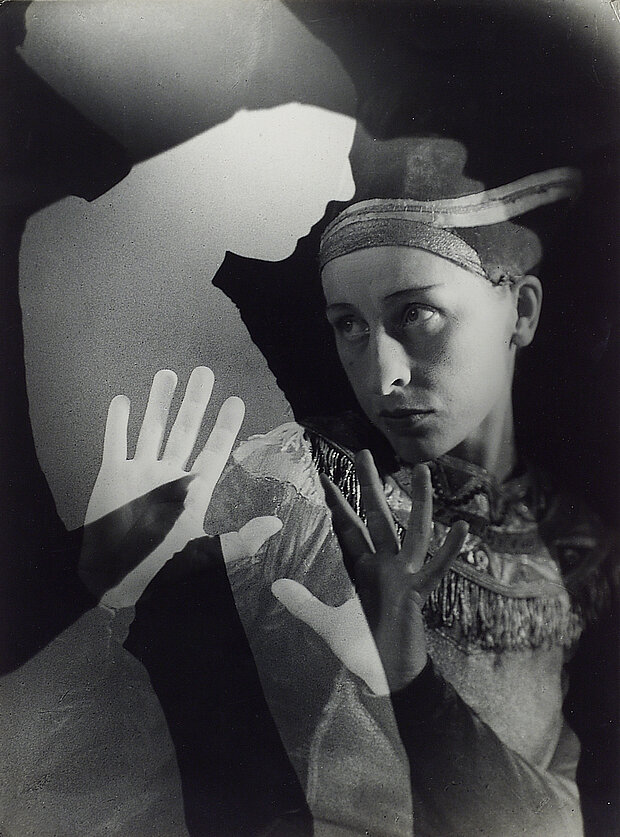
Kesting, Edmund
Dore Hoyer I
1939

© mumok
| Object description | Vintage silver print |
|---|---|
| Dimensions |
Objektmaß:
height: 39 cm,
width: 29 cm,
height: 65 cm,
width: 50 cm
|
| Year of acquisition | 1991 |
| Inventory number | G 747/0 |
| Creditline | mumok - Museum moderner Kunst Stiftung Ludwig Wien |
| Rights reference | Bildrecht, Wien |
| Further information about the person | Kesting, Edmund [GND] |
Hands, heads, and bodies in black and white, on top of each other and next to other, with one face in focus—the face of Dora Hoyer. She was a dancer and choreographer who developed a new and modern form of dance in Germany during the 1920s. Like many others, Hoyer was looking for a language of the body that was no longer determined by classical ballet. This counter-movement and the wish to find a form for a new sense of the body led to the genre of free dance. Dora Hoyer was known for her very dramatic choreography. In photos of one of her shows in the 1930s, German photographer Edmund Kesting captured the dancer in her costume and in expressive poses. He intensified the dancer’s expressive gestures and gazes by carefully selecting the focus of his photos, and also by working with multiple exposure. He was able to multiply the spread-out hands and fingers and to create effects of light and dark. A closer look reveals a second person—a male figure in semi-profile like a shadow next to the dancer. Dora Heyer’s hands seem to be pushing this intruder away. Perhaps Edmund Kesting used photomontage here to add himself to the dance scene. He began to experiment with montage in 1925 and produced many self-portraits. Kesting had close contacts with avant-garde artists in Germany and Austria. This photo of Dora Hoyer was probably not really a classical commissioned work, as the two artists shared similar existential concerns at the time. National Socialists were closing schools and forbidding artists‘ associations where Kesting was a member. They also rejected Dora Hoyer‘s style of dance and stopped engaging her.
© mumok – museum moderner kunst stiftung ludwig wien